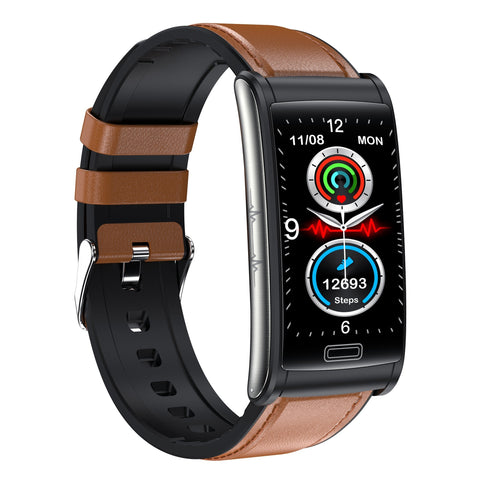The Benefits of Using a Wearable Device as a Fitness Tracker and How They Function
Imagine having a personal health coach with you every step of the way, keeping track of your progress, motivating you to reach your goals, and providing insights to enhance your well-being. This is the promise of wearable fitness trackers, the cutting-edge devices that are changing the game in personal fitness and health monitoring. These sleek gadgets are more than just accessories; they are powerful tools that can help you unlock your full fitness potential. Let’s dive into the benefits of using wearable fitness trackers and discover the technology behind their remarkable capabilities.
The Benefits of Using Wearable Fitness Trackers
1. Motivation and Accountability
One of the primary benefits of fitness trackers is the motivation they provide. Seeing real-time progress on your wrist can be incredibly motivating. Many trackers also have social features that allow you to share your progress with friends or participate in fitness challenges. This sense of community and accountability can be a powerful motivator to stay active and achieve your fitness goals.

2. Accurate Activity Tracking
Wearable fitness trackers provide accurate tracking of various activities, such as steps taken, distance traveled, and calories burned. This data helps users understand their daily activity levels and identify areas for improvement. For instance, if you notice you’re not hitting your step goal, you might be encouraged to take the stairs instead of the elevator or go for a walk during your lunch break.
3. Heart Rate Monitoring
Many fitness trackers come equipped with heart rate monitors that provide continuous heart rate tracking. This feature is beneficial for ensuring you’re exercising within your target heart rate zone, which can optimize your workouts and improve cardiovascular health. Additionally, monitoring your resting heart rate can be an indicator of overall fitness and heart health.
4. Sleep Tracking
Quality sleep is essential for overall health and fitness. Wearable fitness trackers often include sleep monitoring features that analyze your sleep patterns, including the duration and quality of sleep. This information can help you make informed decisions about your sleep habits and identify factors that may be affecting your rest.
5. Goal Setting and Progress Monitoring
Fitness trackers allow users to set personalized fitness goals, whether it’s a specific number of steps, a certain distance to run, or calories to burn. The device then tracks progress towards these goals and provides feedback, which can be extremely encouraging and help maintain motivation.
6. Personalized Insights and Recommendations
Advanced fitness trackers use the collected data to provide personalized insights and recommendations. For example, they might suggest increasing your activity level if you’ve been inactive for a period or recommend recovery tips based on your recent activity and sleep data.
7. Integration with Other Apps and Devices
Many fitness trackers can sync with other health and fitness apps, such as MyFitnessPal, Strava, or Apple Health, to provide a more comprehensive view of your health. This integration allows for better data analysis and a more holistic approach to health and fitness management.
How Do Wearable Fitness Trackers Function?
1. Sensors and Data Collection
At the core of every fitness tracker are its sensors. Common sensors include accelerometers (to measure movement and steps), gyroscopes (to detect orientation and rotation), and optical heart rate sensors (to measure blood flow and heart rate). Some advanced trackers also include GPS sensors for precise location tracking, barometers for altitude changes, and skin temperature sensors.
2. Data Processing
Once the sensors collect data, the device’s internal processors analyze this information. Algorithms interpret the raw data to provide meaningful metrics, such as the number of steps taken, distance traveled, or calories burned. For instance, the accelerometer detects movement, and the algorithm translates these movements into steps.

3. Connectivity and Synchronization
Wearable fitness trackers typically connect to smartphones or computers via Bluetooth or Wi-Fi. This connectivity allows the device to sync data with companion apps, where users can view detailed reports, track long-term progress, and adjust settings. Synchronization also ensures that firmware updates can be applied to improve functionality and accuracy.
4. User Interface and Feedback
Fitness trackers provide real-time feedback through displays or companion apps. Users can view their progress, receive notifications, and access insights directly on the device or through the app. This feedback loop is crucial for maintaining engagement and making informed decisions about one’s fitness routine.
Conclusion
Wearable fitness trackers offer numerous benefits, from enhanced motivation and accurate activity tracking to heart rate monitoring and personalized insights. These devices function through a combination of advanced sensors, data processing algorithms, and seamless connectivity, providing users with valuable information to support their health and fitness goals. As technology continues to evolve, we can expect fitness trackers to become even more sophisticated, offering deeper insights and more personalized recommendations to help us lead healthier lives.











